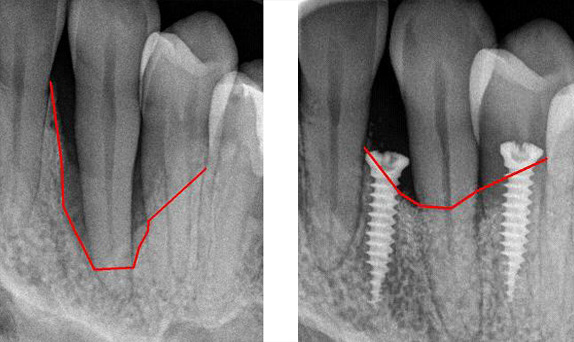How Can a Dental Surgeon Restore Jaw Bone Tissues?
A dental surgeon deals with restoration of jaw bone tissues which is necessary for a full functional and aesthetic correction of the oral cavity. Restoration is carried out with qualitative removable or permanent dental prostheses. The prostheses are made either from dental implants or from a patient’s natural teeth. A dental surgeon can considerably improve the visual appearance and functionality of the oral cavity and prolong a patient’s youthfulness.
How Can a Jaw Bone Disappear?
- neglected or poorly healed parodontosis; the bacteria eats up the ligaments and the bone which holds the jaw in its place;
- tooth extraction with tooth forceps. The forceps are usually put on the edges of the bone, since the tooth itself has a smooth and sliding surface. As a result, not only the tooth, but also the bone on both sides of the tooth can be pulled out or damaged;
- the lack of prostheses on the place of missing teeth. The bone tissues create an alveolus dentalis – a nest in which the tooth is fixed in the jaw. If the tooth is removed, the alveolus loses its point and the organism gradually destroys it;
- long-term wearing of removable prostheses. Naturally, teeth are fixed in the jaw bone but the removable prostheses put too much pressure on the gums, not intended for chewing food. Trying to avoid pressure, the gums press more on the bone and provoke active destruction of the jaw.
The Jaw Bone Tissue Functions
The jaw bone tissues are necessary for several reasons:
- If removable prostheses are used, the plate needs to have sufficient retention (a place where it is possible to cling to the jaw or implants, which allows the implants to be held firmly in place.) This is especially important for the lower jaw prostheses. Tongue ligaments, movements of cheeks and lips, talking, smiling, and other activities provoke instability of the prostheses. A professional dental surgeon can place prostheses in a correct way. It is important to remember that such surgery is possible at any age.
- To support permanent prostheses based on implants and a patient’s natural teeth, as the implant is the root of an artificial tooth. It holds the tooth crown (the visible part of the tooth) in place both during passive time and active dental usage. The implant is an invaluable assistant for a confident and genuinely sincere smile.
The jaw bone tissues must enclose the implant in the same way as they enclose the real tooth root. In order to ensure the long-term usage, for ten and more years, a dental surgeon should provide a sufficient bone tissue basis for the implant in all directions. On the upper side, the implant should be enclosed by bone tissues for at least 1,5 to 2 mm. Dental surgery creates a stable base for the implant.
- For aesthetics of the lower third of the face. Jaw bones and lips keep the teeth from falling out whereas the cheeks prevent the hollowness and create the contours of the face (however, some people consider hollow cheeks very attractive and young Hollywood actresses are known for tearing out large lateral teeth to achieve this kind of effect).
Due to premature tooth loss, and also due to loss of bone tissue, the correct vertical ratio of the upper and lower jaw disappears and the chin starts to approach the nose. The upper lip loses its shape and straightens. The lower lip seems to be twisted outward, and under it a skin fold is created. In the corners of the lips, a wrinkle appears, which is directed downwards and compensates the loss of vertical height. In this case, only a good dental surgeon can help the patients as dental surgery restores the jaw bone tissues. Surgery is necessary to insert the implants in the missing spaces and restore the aesthetics of the oral cavity.
A skilled dental surgeon can achieve significant aesthetic and functional improvements in any situation. Dental surgery, restoration of the jaw bone tissues and implant insertion are available to all people, regardless of their age. Apply for a consultation now and find out how dental surgery can help you!
Gallery: Have look how a dental surgeon restores the jaw bone tissues with the help of the implants


Before and after – the red line indicates the volume of the restored bone. The new bone will hold the tooth much more stable.

